Inside India's plan to bring back extinct cheetahs
- Published
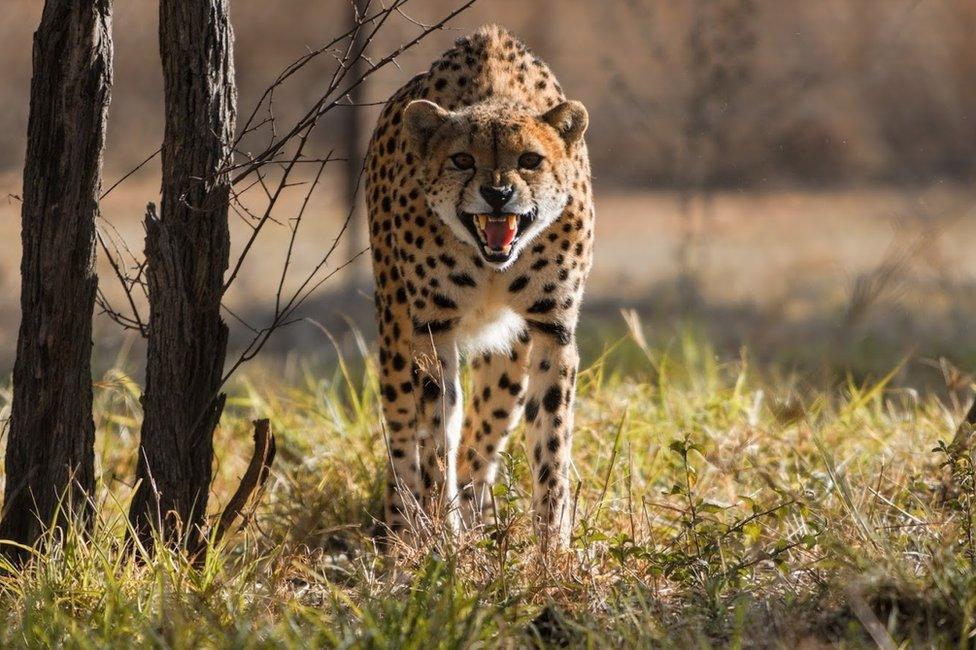
One of the cheetahs bound for India in a quarantine facility in South Africa
Next week, a group of cheetahs are finally expected to make a long journey from Africa to their new home in a sprawling national park in India.
The world's fastest land animal is poised to make a comeback in India, more than half a century after it became extinct in the country.
This is the first time a large carnivore is being moved from one continent to another and being reintroduced in the wild. "It is exciting, it's challenging. It's a big feather in India's cap to restore a lost treasure," says Yadvendradev Jhala, dean of the Wildlife Institute of India, and one of the experts tasked with the effort.
Where are the cheetahs coming from?
At least 16 cheetahs are coming to India from South Africa and Namibia, home to more than a third of the world's 7,000 cheetahs. More than half of the world's cheetah population are found in these two countries and Botswana.
In South Africa, cheetahs are found in three different places: a small and declining number are free roaming, living in unprotected areas; a larger, stable population live in large national parks; and the remainder in smaller groups in fenced - mostly privately owned - protected reserves.
The India-bound cats have been mostly picked up from the reserves, where they breed well. There are some 500 adult cheetahs in 50-odd such reserves in South Africa.
The world's fastest land animal is poised to make a comeback in India
Veterinarians fired tranquiliser darts from moving helicopters to capture some of these cheetahs. "Some of them were slightly wilder," muses Vincent van der Merwe, a cheetah conservationist in South Africa who was involved the mission.
After capture, the tranquilised cats were microchipped, injected with antibiotics to prevent infection, rehydrated with drips, had their blood taken for DNA and then were put in crates and flown to quarantine facilities.
The cheetahs, including more than six females, are young animals in prime breeding age. "They are cats who have already left their mothers and fully capable of surviving themselves," says Mr van der Merwe.
Where are the cheetahs now?
The South African cheetahs are now in two quarantine enclosures in a veterinary facility in Rooiiberg and the Phinda game reserve in Zululand. Four others are in Namibia.
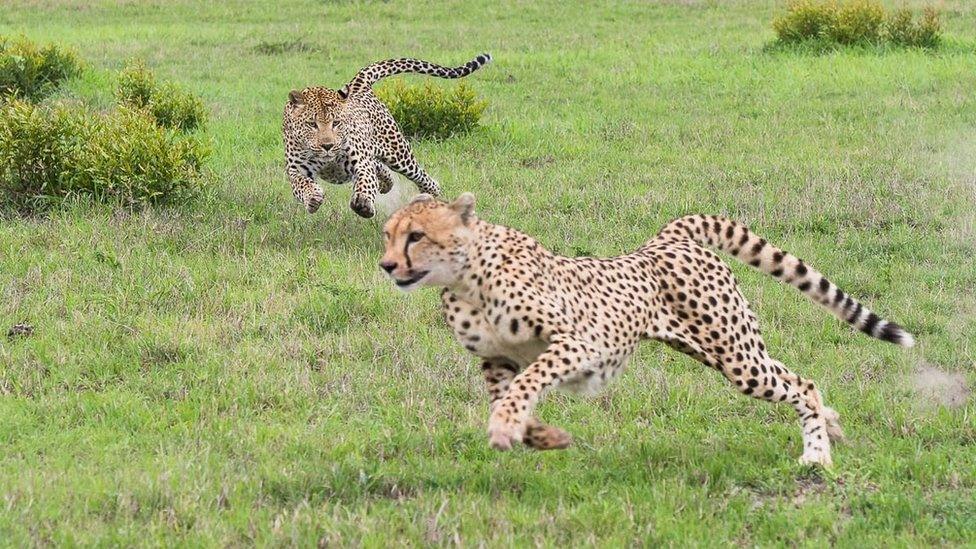
A leopard bounding towards a cheetah in South Africa
They have been tested for a number of diseases and vaccinated against at least six, including rabies, blood parasites and herpes. In quarantine, the cheetahs are monitored and observed to ensure that that they have no diseases of concern, says Mr van der Merwe.
How challenging is the long journey?
Experts say wild cheetahs can be difficult to transport as they get stressed by closeness to humans and confinement in crates.
The cheetahs bound for India will have to endure a long flight on a cargo plane from Johannesburg to Delhi and then onwards by road or helicopters to Kuno national park in Madhya Pradesh state, their new home.
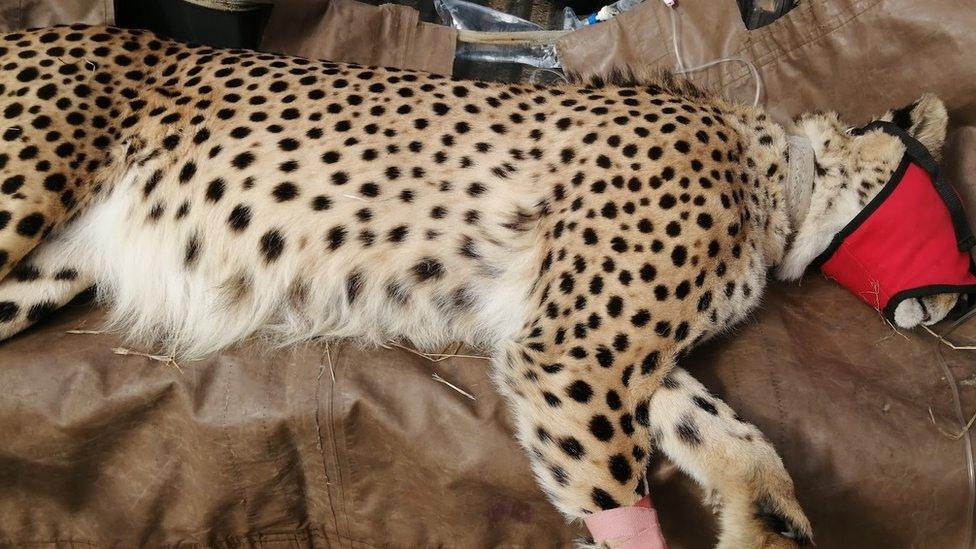
A cheetah bound for India anaesthetised after capture
The cats will be immobilised with tranquilisers on the day of the journey and put in metal crates in the plane along with wildlife specialists, including a vet.
Once in the crates, the cheetahs will be given an antidote to wake them up from the anaesthetic, but also a mild tranquiliser to keep them awake and calm during the journey. "This has made it much easier to transport these animals," says Adrian Tordiffe, a veterinary wildlife professor at the University of Pretoria.
Cheetahs have been transported long distances in the past. Mr van der Merwe says he transported a female cheetah in the back of a vehicle on a 55-hour-road journey from South Africa to Malawi. "They are very adaptable animals."
Will the cheetahs be fed during the air journey?
No.
Cheetahs feed once - usually 15kg of meat - every three days. In South Africa, for example, cheetahs are mainly fed common warthogs, although they prefer medium-size antelopes.
Feeding a cheetah before a long journey can be risky and lead to the cat falling sick and choking on its vomit.
The India-bound cheetahs will not be fed for two days before the journey, says Mr van der Merwe.
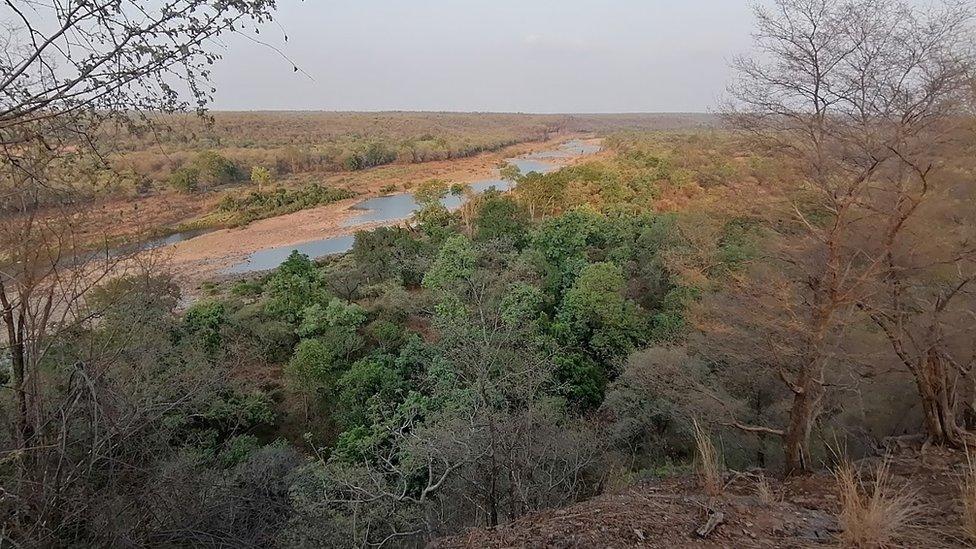
The African cheetahs will be relocated to India's Kuno national park
What will the cheetahs do after they arrive here?
The cats will be initially quarantined for at least a month in a fenced camp in the Kuno national park.
This is not for breeding but to anchor them to a central area. "All cats have homing instincts, and they are inclined to walk back home to where they came from. We break that by putting them up in holding facilities for one or two months," says Mr van der Merwe.
After that, the cheetahs will be released in the 115,000-hectare national park.
What are the challenges the cheetahs might face?
Leopards, for one.
They can limit the population by killing cheetah cubs, especially in the Kuno national park.
Cheetahs are delicate animals, meant for speed. They avoid conflict, and are targeted by competing predators.
The cheetahs coming to India have been exposed to lions, leopards, hyenas and wild dogs at home. In Kuno, they will have their first encounters with sloth bears, striped hyenas and wolves.
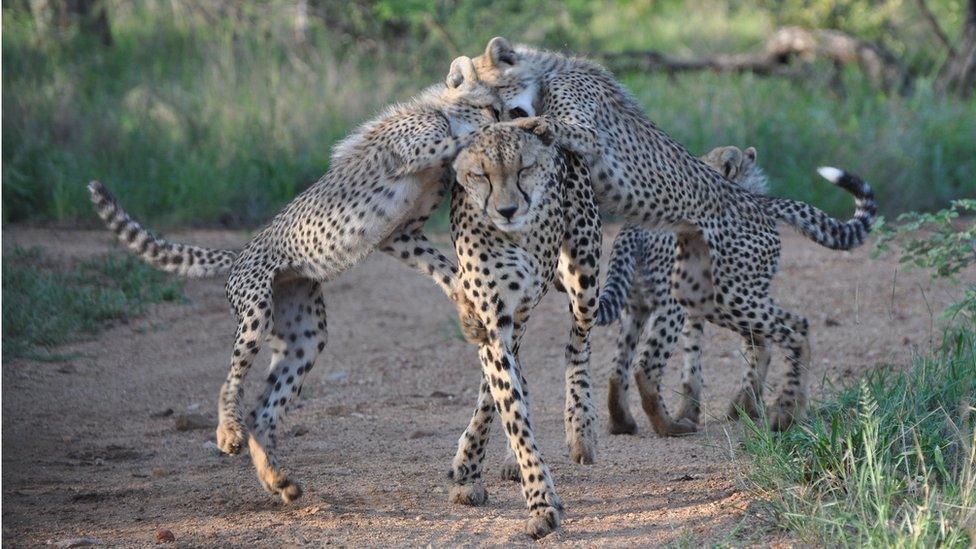
There are some 7,000 cheetahs worldwide
Their main prey base in India will be spotted and large deer and the Indian gazelle, and the four-horned antelope.
"So we believe that they are experienced enough to handle any dangerous interactions with the leopards in Kuno," says Mr van der Merwe.
Also, in unfenced reserves like Kuno there is also a possibility that the cheetahs can disperse in any direction and becoming isolated. This will be managed by either satellite or VHF tracking collars to bring them back to the central area.
"The cheetahs do seem to settle down after a while and we have strategies in place to keep the males, in particular, anchored to the initial release site using scent markings etc," says Prof Tordiffe.
Relocation of animals is always fraught with risks.
"We are taking animals out of a familiar environment and it takes time for them to really feel comfortable in their new habitat. It is true that cheetahs are known to have lower survival rates after reintroductions than other large carnivores," says Prof Tordiffe.
But he points out to a well-documented reintroduction of cheetahs in Malawi where 80% of the adult cheetahs were still alive after a year and that their population managed to grow quite successfully despite the loss of 20% of the cats in the first year.
How does India plan to sustain a cheetah population?
Some Indian conservationists remain sceptical of the idea, saying that most of the country's former cheetah habitats are shrinking because of pressure on land.
Officials like Mr Jhala are more optimistic and believe the Kuno park has sufficient space, ample prey and less pressure of human population, all key to the cheetah's survival.
India is looking at a capacity population of 20 cheetahs in Kuno national park.
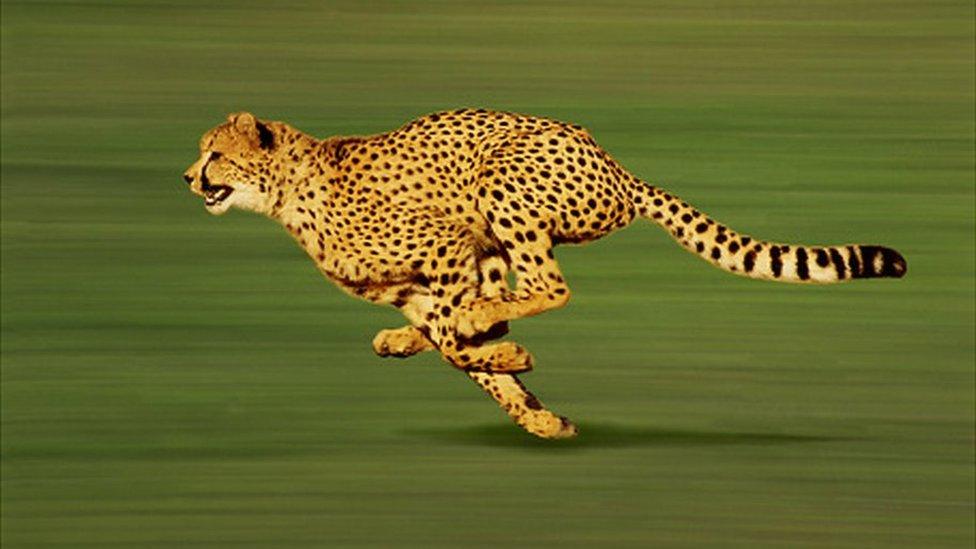
The cheetah is the world's fastest land animal
In five to six years, the country plans to import and locate 50 to 60 cheetahs in half-a-dozen reserves and parks across the country and move the animals around for genetic and and demographic diversity.
Why is this a globally important project?
Experts say this is a key experiment in conservation of the cheetah.
There are only about 12 Asiatic cheetahs left in the wild in Iran. A recent genetic survey revealed that these animals are highly inbred.
"It is, in my view, ridiculous to have any hope of reviving that little isolated population from such a small base. Trying to conserve subspecies like that is a waste of effort and has little chance of success. It is better to focus on the global population even if that means allowing some level of hybridisation, says Prof Tordiffe.
"The cheetah reintroduction into India is a bold step in terms of conservation and one that is desperately needed if we are to have any chance of saving this species from extinction."

You may also be interested in...
Curious cheetah joins safari group in Tanzania

- Published28 January 2020
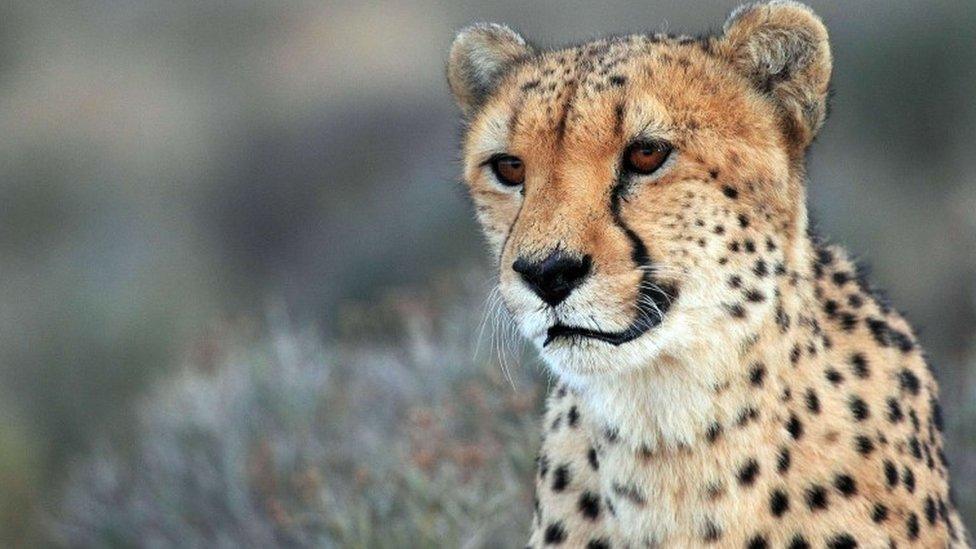
- Published17 June 2020

